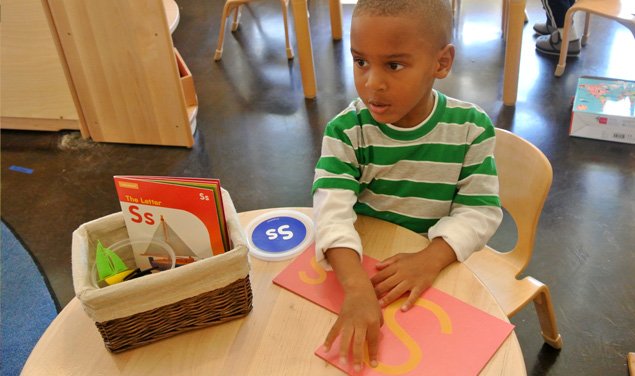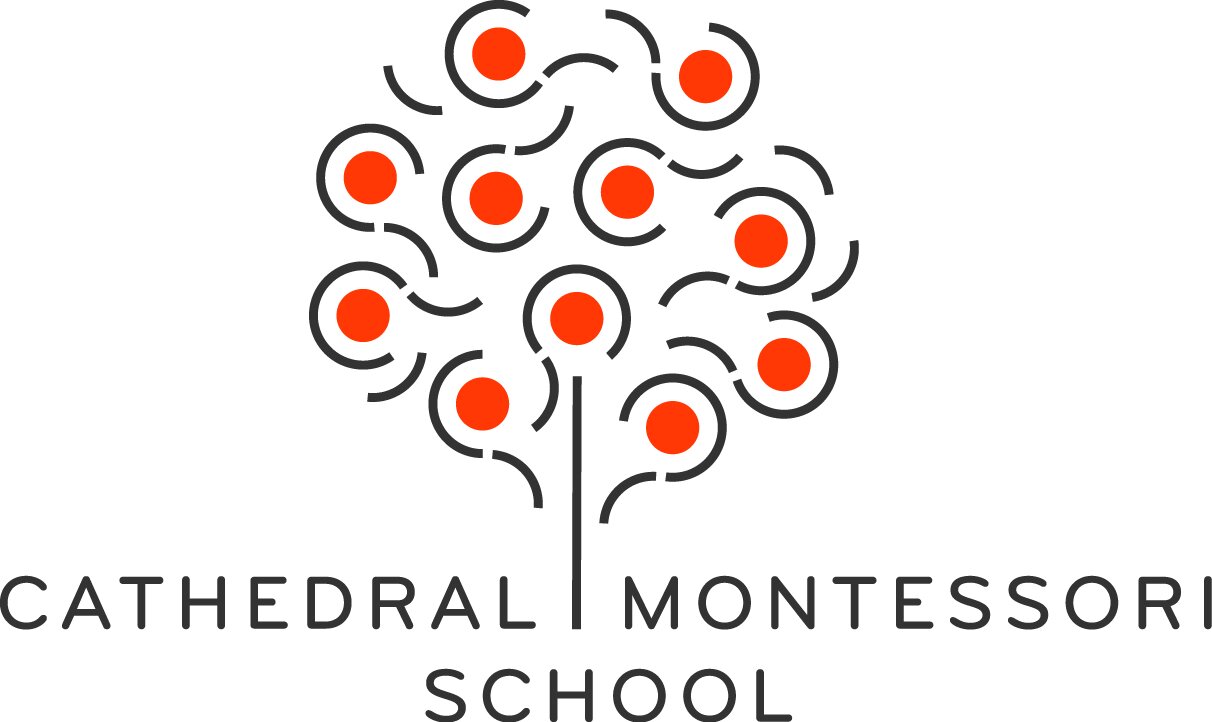Primary School
The preschool classroom is organized as a “living room” for children ages 3-5, with areas of practical life, sensorial, math, language, art, and culture and science. The materials and work in each region evoke natural curiosity and help develop coordination, concentration, and a sense of order and responsibility.
The “prepared” environment guides students through lessons, promoting independent inquiry and pursuit of work that sparks their individual interests. Children are taught HOW to learn instead of WHAT to learn. Children are free to make decisions while instructors lead them through the process by providing age-appropriate activities.
Children in this multi-age group learn more easily and efficiently than at any other time of life and use their senses to explore a variety of sensations: size, color, shape, texture, scent, sound, and more. They learn about order and organization, movement coordination, and fine and gross motor skills, gaining self-confidence and independence. The holistic, hands-on activities include vocabulary development, sensorial awareness, math, language arts, handwriting, sciences, geography, history, art, and music. Children take pleasure in games of organization and order, tangible introductions to language and concepts of numbers.
The Montessori Classroom
-

Culture & Science
Montessori cultural materials provide individual activities, which ehlp the child to acquire knowledge in the ares of cultural, biology (botany and zoology), geography, history, science and art.
Cultural study begins with looking at the universe and solar system and then zooms in to the earth, continents, countries, land and water formations, and continues down to the people and their habitats.
-

Art
The art curriculum in the 3-6 classroom focuses on individual art work that is connected to other subjects, which makes it more creative, noncompetitive, and successful than group projects or models created by the teacher for children to imitate.
Art engages the areas of the brain where children develop emotion, cognition, and memory.
-

Language
From age 1-3 years, the child experiences a language explorsion adn builds a foundation for future language learning. The sensitive period for reading and writing occurs from ages 3-6. In the Montessori classroom, the children are exposed to many kinds of reading from the three-part cards to sequencing and classifying.
Maria Montessori designed the metal insets, the movable alphabet, and the sandpaper letters. The Montessori language curriculum emphasizes five areas critical to reading success: phonemic awareness, vocabulary, comprehension, and fluency. These five areas naturally occur in all five areas of teh Montessori classroom.
-

Math
Montessori believed that we are born with mathematical minds, and that we have the propensity to learn things that increase our ability to be exact and orderly, to observe, compare and classify. The indirect purposes of math materials expose children to concepts that will lay the foundation for increasingly complex math operations.
The Montessori math materials are three-dimensional, multi-sensory objects, as opposed to flat pictures in a workbook. They stimulate the learning process and enhance recall through memory.
-

Sensorial
The education of the senses aids the natural development of the child, which is an important tenet of the Montessori philosophy. The orderly manner in which the education of the senses occurs has a direct impact on neurological and psychological development. As refinement of the senses occurs, the child develops cognitive skills such as problem-solving and association- indirect preparation for intellectual life.
Sensorial work provides opportunities for math and language development such as left to right eye movements, visual and auditory discrimination, eye-hand coordination, vocabulary development, and strengthening of fine more skills needed for future writing.
-

Practical Life
Through freedom of choice and purposeful activity, the children’s Practical Life work helps them develop balance, coordination and manual dexterity. The work develops organization skills, prepares the child with skills for every day life and emphasizes the three-finger group, left to right movement and top to bottom movements - prerequisites for the development of reading and writing skills.

